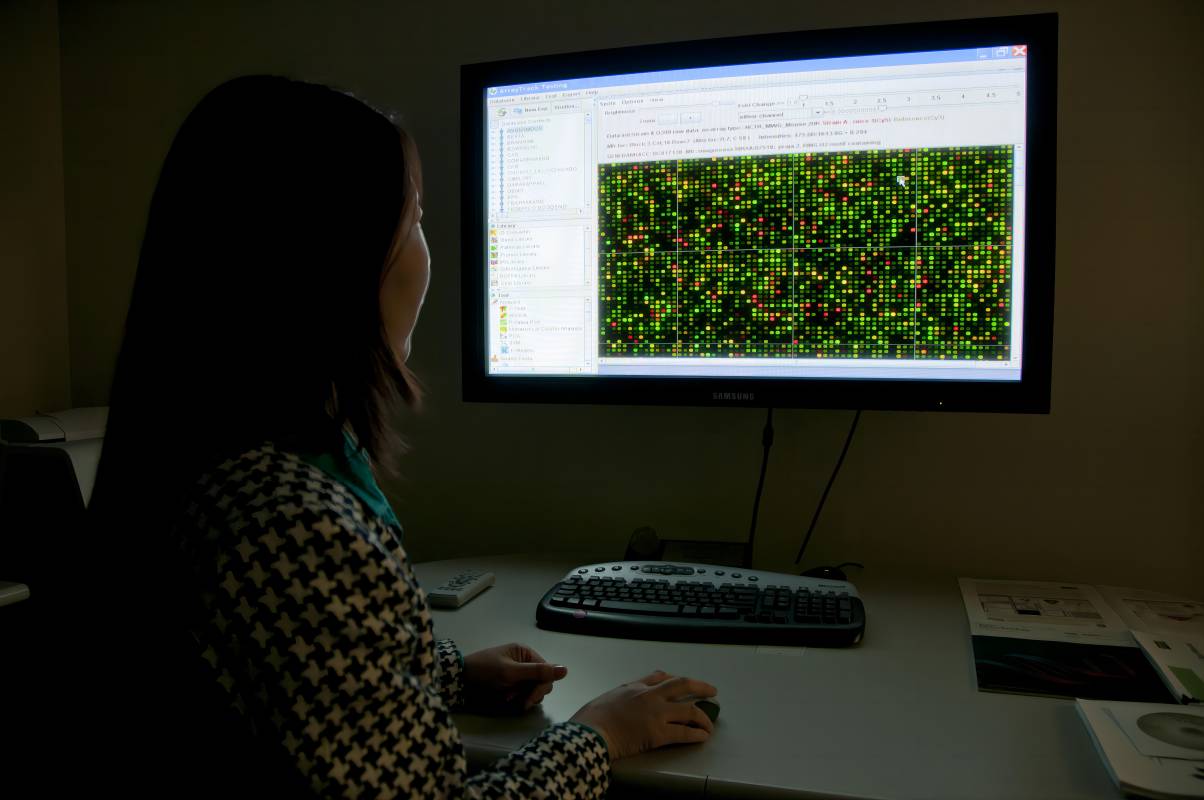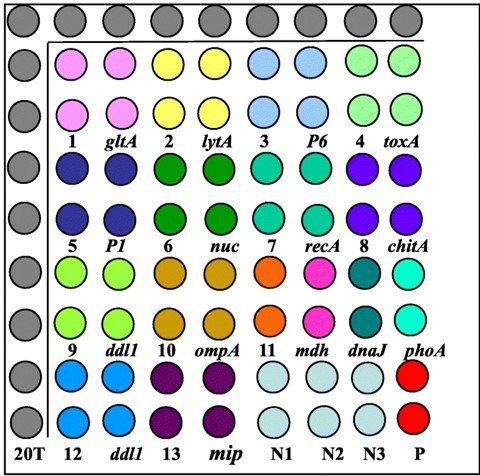Microarray-based in vitro diagnostics (IVD) products would provide better diagnosis data and more efficient approaches for treating patients. Based on our advanced technology and abundant experience in the IVD field, Creative Biolabs has been a leading biotechnology company that provides a full range of services to develop high-quality customized microarrays for global customers. We offer a large suite of microarray platforms to fulfill your expression profiling needs and to develop microarray assays applicable to IVD.
Introduction About Microarray
A microarray is a multiplex lab-on-a-chip that tests large amounts of biological material using a high-throughput screening method. It is a miniaturized, multiplexed, and parallel detection method. In contrast with traditional biological assays, microarrays allow the simultaneous measurement of tens of thousands of messenger RNA (mRNA) transcripts for gene expression or genomic DNA fragments for copy number variation analysis. DNA microarray approach is now broadly used in parasitology research to facilitate the identification of drug targets and biomarkers for diagnostic and therapeutic development.
 Fig.1 DNA microarray experiment. Distributed under Public Domain, from Wiki, without modification.
Fig.1 DNA microarray experiment. Distributed under Public Domain, from Wiki, without modification.
Application of Microarray in IVD
Visceral leishmaniasis (VL) is endemic in 62 countries of Asia, Africa, and America. It is important to discover therapeutic targets for specific therapies of VL. DNA microarray is a technology that can monitor a large number of single nucleotide polymorphisms in the genome of an organism on a single chip by base-pairing. DNA microarray could potentially benefit the identification of novel diagnostics/prognostics biomarkers and therapeutic targets in VL. The previous microarray studies performed for Leishmania (L) have been substantially restricted to L. major, which differentiates the procyclic stage with metacyclic or with amastigote stage. Scientists found that gene expression in L. donovani, the causative agent of visceral leishmaniasis, was estimated between cultured promastigotes and axenic amastigotes on a genomic microarray. They found various clones with the potential to be new genes.
 Fig.2 DNA microarray data can be represented as heatmap.2
Fig.2 DNA microarray data can be represented as heatmap.2
Microarrays in Infection Biology
One of the first microarrays designed for a wide range of pathogens was the virochip. Its utility for detection of viruses in acute respiratory tract infections in children could be shown in a clinical study of more than 200 children, showing superior performances about sensitivity and specificity profile and expanded spectrum for detection of viruses if compared to serologic or polymerase chain reaction (PCR)-based detection methods.
Also, resistance mechanisms of emerging pathogens like Acinetobacter baumannii can be detected using microarrays. Scientists have developed a microarray that can be used to detect 91 target sequences associated with antibiotic resistance within 4 hours from a bacterial culture.
Our Services
The microarray technology can be widely used for the identification of gene sequence and determination of gene expression level. It has been a useful tool applied in IVD. We provide many microarrays services, including but not limited to:
- Printed probe spot-based microarray service
- Oligonucleotide-based microarray service
- Electronic-based microarray service
- Suspension-bead microarray service
- Circular RNA (circRNA) microarray service
- Peptide-based microarray service
- Transcriptome microarray service
- microRNA (miRNA) profiling microarray service
- Long non-coding RNAs (lncRNAs) microarray service
- Single-nucleotide polymorphism (SNP) microarray service
Microarray analysis can be used broadly, such as (1) for molecular classification (stratification of disease); (2) the search of novel molecular targets of disease; (3) the study of molecular prognosis of disease; (4) the study of molecular patterns that correlate with therapeutic response. Creative Biolabs offers microarray services for our global customers to advance their success in IVD projects. If you are interested in our services, you can contact us.
Published Data
1. A Novel DNA Microarray Assay for the Rapid and Simultaneous Detection of Fifteen Bacterial Pathogens Commonly Associated with Pneumonia
 Fig.3 The layout of the hybridization capture-chip.1
Fig.3 The layout of the hybridization capture-chip.1
This study aimed to develop and assess a DNA microarray assay designed to simultaneously identify fifteen bacterial species in respiratory samples from patients with pneumonia. Targeting the 16S rDNA and specific genes, the pathogens included Streptococcus pneumoniae, Haemophilus influenzae, Escherichia coli, Mycoplasma pneumoniae, Legionella pneumophila, etc. The pathogens were amplified via multiplex PCR and hybridized to microarray probes. The assay exhibited a detection limit of 103 copies/μL and accurately identified 19 standard strains and 119 clinical isolates, while showing no detection of 3 nontarget species from 4 clinical isolates. The assay accurately identified bacterial pathogens even when multiple bacterial targets were mixed. Besides, results for 99.4% (156/157) of clinical specimens matched those from conventional assays. This DNA microarray offers an expanded detection range and faster results for bacterial pathogens in pneumonia.
Reference
- Ma, Xiuqing, et al. "Development of a DNA microarray assay for rapid detection of fifteen bacterial pathogens in pneumonia." BMC microbiology 20 (2020): 1-13. Distributed under Open Access license CC BY 4.0. The image was modified by extracting and using only part of the original image.
For Research Use Only.

